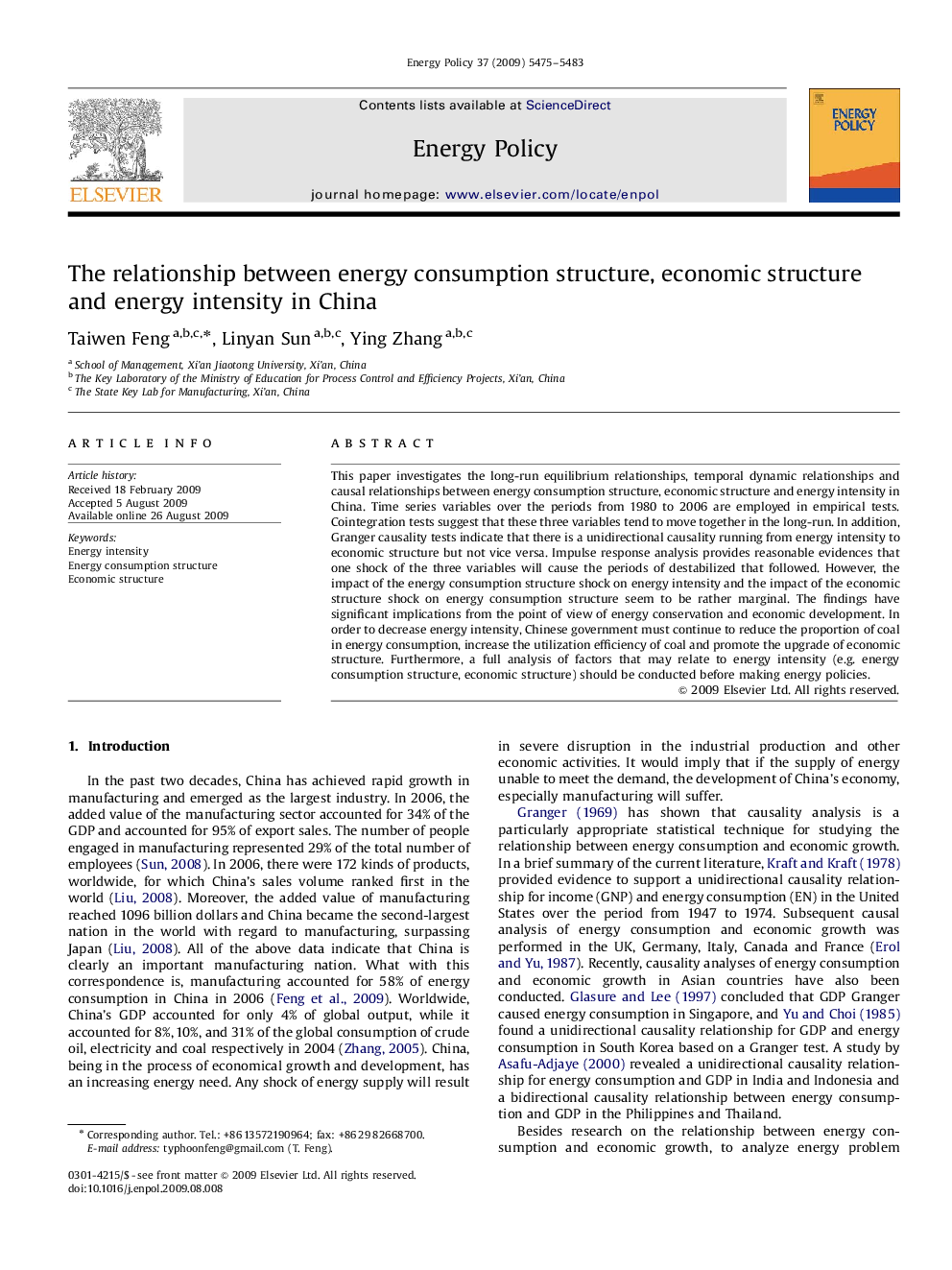| Article ID | Journal | Published Year | Pages | File Type |
|---|---|---|---|---|
| 995210 | Energy Policy | 2009 | 9 Pages |
This paper investigates the long-run equilibrium relationships, temporal dynamic relationships and causal relationships between energy consumption structure, economic structure and energy intensity in China. Time series variables over the periods from 1980 to 2006 are employed in empirical tests. Cointegration tests suggest that these three variables tend to move together in the long-run. In addition, Granger causality tests indicate that there is a unidirectional causality running from energy intensity to economic structure but not vice versa. Impulse response analysis provides reasonable evidences that one shock of the three variables will cause the periods of destabilized that followed. However, the impact of the energy consumption structure shock on energy intensity and the impact of the economic structure shock on energy consumption structure seem to be rather marginal. The findings have significant implications from the point of view of energy conservation and economic development. In order to decrease energy intensity, Chinese government must continue to reduce the proportion of coal in energy consumption, increase the utilization efficiency of coal and promote the upgrade of economic structure. Furthermore, a full analysis of factors that may relate to energy intensity (e.g. energy consumption structure, economic structure) should be conducted before making energy policies.
